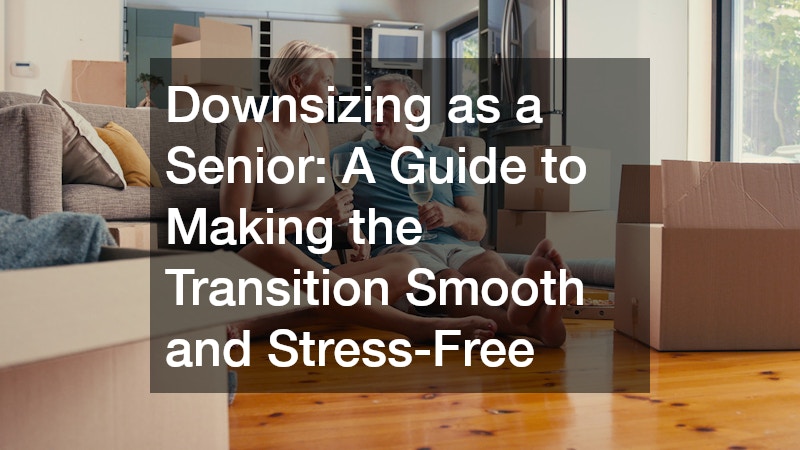Downsizing later in life can be both an exciting opportunity and an emotional challenge. For many seniors, the decision to move to a smaller home, condo, or retirement community is motivated by a desire for a simpler lifestyle, easier maintenance, and a more manageable living space. While the process can feel overwhelming, with the right planning and mindset, downsizing can be a positive and liberating experience.
Below is a step-by-step guide to help make your transition smooth, organized, and stress-free.
Start With a Clear Vision
Before you begin packing or sorting, think about why you are downsizing and what your ideal new living situation looks like. Do you want to be closer to family, live in a walkable community, or reduce home upkeep? Having a clear vision will help guide decisions about what to keep, what to donate, and what to let go of.
Consider the type of home you are moving into and the lifestyle you want to embrace. For example, if your new place has a small kitchen, you may not need multiple sets of cookware. If there’s no yard, you can likely part with gardening tools. Aligning your possessions with your vision ensures that everything you bring has a purpose.
Begin Downsizing Early
One of the most common mistakes is waiting until the last minute to begin sorting through belongings. Start early—months in advance if possible. This gives you time to make thoughtful decisions without feeling rushed.
Work in small, manageable sections, such as one closet or one room at a time. This method prevents burnout and allows you to see progress, which can be motivating. Use a simple sorting system: keep, donate, gift, sell, or discard.
Focus on What Truly Matters
Downsizing is not only about getting rid of things—it’s about keeping what is meaningful and useful. Ask yourself:
-
Do I use this regularly?
-
Does it hold sentimental value worth the space it will take up?
-
Would someone else benefit from it more than I do?
For sentimental items, consider photographing them to preserve the memory without keeping the physical object. You can also create a memory box for your most cherished keepsakes.
Get Help From Family or Professionals
Sorting through decades of belongings can be emotionally draining. Having family members help can make the process easier and even enjoyable as you share memories and stories. They can also help decide what should be kept in the family.
In some cases, it might be worth hiring a senior moving company. These professionals understand the unique needs of older adults, offering packing, organizing, and relocation services tailored to your pace and comfort level. They can also handle logistics like floor planning, furniture arrangement, and safe transportation of fragile items.
Plan for Your New Space
One of the best ways to make informed decisions while downsizing is to know exactly how much space you’ll have in your new home. Get measurements of rooms, closets, and storage areas so you can plan what will realistically fit.
Consider multifunctional furniture, such as ottomans with storage or a bed with drawers underneath. This maximizes space without creating clutter. For items you’re unsure about, try setting them aside in a separate area for a week—if you don’t use them, you probably don’t need them.
Let Go With Gratitude
Parting with possessions can stir up emotions, especially items connected to personal history. A helpful approach is to acknowledge the role each item played in your life and release it with gratitude. Remind yourself that by donating or gifting, you’re giving these items a new purpose in someone else’s life.
This mindset shift can make it easier to move forward without guilt or regret.
Organize As You Pack
Packing is much easier when items are sorted and labeled clearly. Use sturdy boxes and mark them by room and contents. Keep a small “essentials box” with medications, important documents, toiletries, and a few days’ worth of clothes so you have immediate access when you arrive at your new home.
If the move will take more than one day or involve storage, label boxes on multiple sides to make them easy to identify. Color-coded labels or tape can also speed up unpacking.
Embrace the New Chapter
While downsizing may require tough decisions, it also opens the door to a lighter, more focused lifestyle. With fewer possessions, there’s more room for experiences, hobbies, and connections. Many seniors find that moving to a smaller space reduces daily stress and increases overall well-being.
Take time to enjoy setting up your new home. Incorporate familiar pieces that make you feel comfortable, but also embrace the opportunity to refresh your surroundings with a simpler, more intentional design.
Downsizing as a senior is about more than moving to a smaller space—it’s about creating a home that supports your needs, priorities, and dreams for the future. By starting early, making thoughtful decisions, and seeking help from loved ones or professionals, you can make the process smoother and more meaningful.
If you’re ready to make the transition and want expert support every step of the way, consider working with a trusted senior moving company. With the right team and plan, you can turn downsizing into an exciting and positive new chapter in life.


